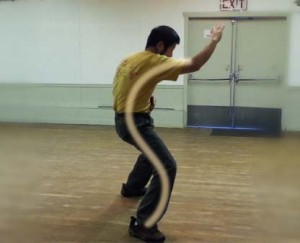Interview with Chen Stylist Chen Zhonghua Read more
Knowledge : Principle-Concept
English Link: http://practicalmethod.com/2011/09/jiang-zhoucun-taiji-lecture-on-daqingshan-2011/
 One concept which seems to come up in almost every lesson and principle Master Chen teaches is connection. But what does “being connected” actually mean? How do we achieve it and what are the benefits of being connected? I think these are all important questions that any serious Chen Style Taijichuan Practical Method student needs to explore and understand in order to gain a deeper understanding of this complex art. While most practioners seem to focus on the external choreography of the art, which is the first step and the foundation of the Yilu, I think the answer to what connection is can only be found by focusing on what happens inside the body. Taiji is, after all, an internal martial art!
One concept which seems to come up in almost every lesson and principle Master Chen teaches is connection. But what does “being connected” actually mean? How do we achieve it and what are the benefits of being connected? I think these are all important questions that any serious Chen Style Taijichuan Practical Method student needs to explore and understand in order to gain a deeper understanding of this complex art. While most practioners seem to focus on the external choreography of the art, which is the first step and the foundation of the Yilu, I think the answer to what connection is can only be found by focusing on what happens inside the body. Taiji is, after all, an internal martial art!
“If I move, force will come to me, if I don’t toss, force will pass”
“Force is like water, it will affect parts that move”
Clip from Three Way Split Lesson
Three way split will create an unmoving fulcrum point, so the principle of lever can be applied.
Just arrived in Helsinki, Finland. It is much colder here than in Iceland yesterday. Checked into Scandic Hotel downtown. Had a brief private with Tomi after supper. Here are the main points on basic movements. I am trying to set the rules out for the initial Chen Style Taijiquan Practical Method workshop in Helsinki. Read more

This is the private section of Chen Zhonghua’s Feb. 2011 Workshop in New York. It was meant to be a private teaching session for Michael Calandra and Dean Mayo. This video showed some higher level taiji skills and techniques and lots of training tips for students.
Author: Chen Zhonghua Length: 30 min. In: English Year: 2011 Difficulty:4/5 At:New York
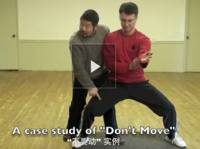
Push Hands practice, the meaning of “Don’t Move”
Presenter: Chen Zhonghua Length: 23min. In: English Year: 2011 Difficulty:1/5 At: Maple Ridge
Hi, just some thoughts here i actually wanted to post on the specific category, but that is not possible anymore. It deals with shoulder and Kua and the connections between the trigrams. Read more
In taiji like in other practices, we tend to want to take in all the material at once. This is impossible as the requirements of taiji are extremely difficult to put into practice. The problem is that if we focus on too many things at once it become too difficult to negotiate all the rules.
It is actually better to work on one rule or one lesson at a time, until it is ingrained. When the body assimilates the rule, it is time to add a further one.
Excellent Article. It serves as a good reminder. Please be patient. It is being translated into English.
太极拳名家洪均生先生是太极宗师陈发科的入门弟子,一生致力于太极拳的研究,其功底深厚、松园缠 绵、缜密雄浑,在国内外影响很大,我成为师爷的再传弟于,实为三生有幸。 Read more
Power in Taiji comes from rotation, but how does rotation generate power?.
The key is S-Line structure that can transform rotation to movement.
Power and stability in rotation only come from proper S-Line alignment.
See Taiji S-Line Video Training for detailed explanation.
Taiji S-Line Demonstration Clip
Here is a short clip on the importance of mastering the concept of Zhuan Guan.
Training video on Zhuan Guan Zhuan Guan Online Video Trailer
Master Chen description on Zhuan Guan ( point 19 )
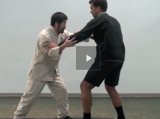
Contents:
1. Introduction. 2. Embrace the Head. 3. Can two moves be identical? 4. Expansion. 5. Energy and Shape.
Author: Chen ZhongHua Length: 27 min. In: English Year: 2010 Difficulty:1/5 At:Edmonton
“太极拳,缠法也。”陈鑫这一句话把太极拳的缠绕的重要性普遍性说到位了。陈、
杨、吴、武、孙各家的螺旋缠绕含露有别,而以陈式太极拳表现得最为明显。陈式太极拳
实用拳法对于缠法有独到的研究和见解。 Read more
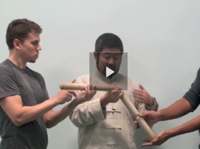
Author: Chen Zhonghua Length: 60 minutes Language: English Chapters: 1 Year: 2010 Location: Edmonton
In 60 minutes, Master Chen Zhonghua clearly demonstrated the hand-foot relationships in every move of the entire Chen Style Taijiquan Practical Method Yilu routine. Demonstrating the principles of stick energy to push, and rope energy to pull.
Why does a robotic arm have so much power that it can kill you? Because it’s attached to something that doesn’t move.
Though Taijiquan belongs to the realm of traditional sport, it is a perfect art form with precise theory and complex methodology. It is also a suitable method for people’s health. Students of this art should follow the rules strictly and go for the difficulties. They should carefully seek the regularities. In doing so, the first requirement is “solemn.” Read more
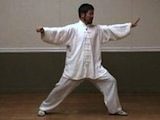
The human energy flows in the body in an organized way which we cannot see with the naked eye or feel by ourselves. The way the energy flows is defined in Taiji as Energy Alignment. This is a video series based on instructions of Chen Style Taijiquan Practical Method Yilu Routine. There are four DVDs in this series. In terms of depth of knowledge, the instructions of this video series belongs to level three (one is basic choreographic learning, two is details of instruction). Please see Energy Alignment 2, 3, 4 for trailers Author: Chen Zhonghua. Length: 1:00 hour long Language: English Postures: 1-28 (sections 1 and 2)
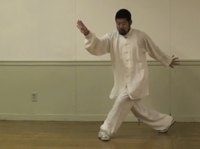
Energy Alignment is a video series based on instructions of Chen Style Taijiquan Practical Method Yilu Routine. There are four DVDs in this series. In terms of depth of knowledge, the instructions of this video series belongs to level three (one is basic choreographic learning, two is details of instruction).
Author作者:Chen Zhonghua 陈中华 Length: 1:09 hours 小时 Language: English 英文 Postures: 29-49 (sections 3 and half of 4)动作
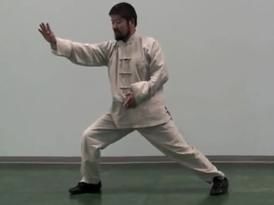
Energy Alignment is a video series based on instructions of Chen Style Taijiquan Practical Method Yilu Routine. There are four DVDs in this series. In terms of depth of knowledge, the instructions of this video series belongs to level three (one is basic choreographic learning, two is details of instruction). By: Chen Zhonghua 陈中华 Language: English 英文 Length: 43:41 Minutes分钟 Postures: 50-68 (finish section 6) 动作
These are some photos and a video of a practice session at the Ottawa October 2010 workshop. Care to guess what they are trying to practice? Read more
Shifu,
As a result of studying some videos and increasing my practice time, I came across some new discoveries that need some confirmation. Read more
There are many important principles in Chen Style Taiji Practical Method. One of which is the principle of 45 Degree. I have heard Chen Zhonghua spoke of it many times since. After years of studying and discovering, I am realizing its importance. Read more
At the full time class in Edmonton this afternoon, I taught the concept of in and out. The general principle is: “The inside must stay inside; the outside must stay outside”. Translating this into taiji movement terms, it is “In with elbow; out with hand”.
Power is always from the back but the difference is the direction. Read more
You might wonder why I bring the 1930’s into the equation. Well, to my mind, the 1930’s is where all the trouble started for a lot of students. So what happened in the 1930’s you may ask.
The front must be full and the back must be stable. You can push from the back but not the front.
I was having a conversation over dinner with my Taiji brother Nicholas Fung about the frustrations of learning Taiji. He was wondering aloud about the method for learning. Read more
Notes:
-Talking about stretching to attain proper structure: Chemicals/toxins deposit in your ‘corners’. Eliminate all corners/creases and create the arch. No power. Structure! Read more
The relation between Taiji and the Taoist concept of time is a topic which Master Chen has emphasized as extremely important, Read more

